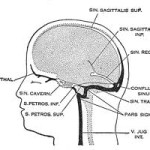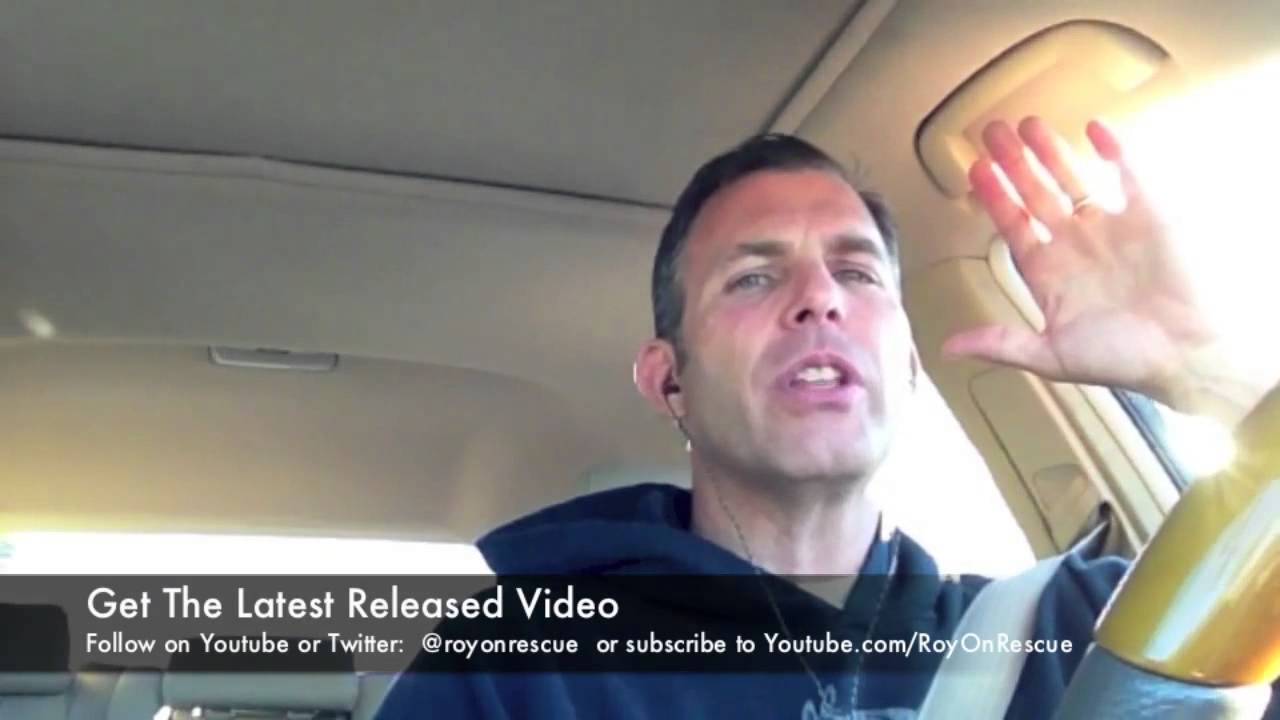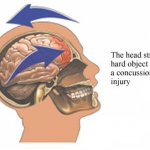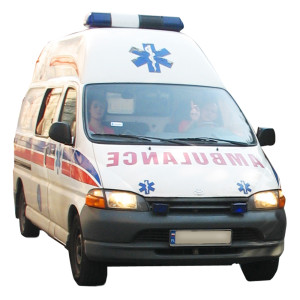In this episode of RoyOnRescue, we look at an email question that came in regarding what to do if a person get’s knocked unconscious. Of course, this can mean that the trauma is severe and EMS/911 should be called. In the meantime, there are some things that can be done to help the victim. Find out more by watching the video.
Tag Archives: head injury
What Is Cerebral Venous Sinus Thrombosis?
Hello Rescuers!
I received an email from a RoyOnRescue friend who had suffered a head injury while playing a sport. After being seen by the doctor he was diagnosed with Cerebral Venous Sinus Thrombosis or (CVST). He had asked me if I would give my explanation of what it is and if it was something he should be worried about. His doctor had ex plained it but he was still a bit foggy regarding the diagnosis. Well, after looking into it from the clinical perspective, I realized that it was a pretty big deal and in some cases may be fatal. I researched multiple sources to gather credible information and when it all came down to brass tacks, I found that the Wikipedia explanation had done a pretty dog-gone good job of summarizing CSVT. So, with all credit given to them for most of this article and a link back to their website, here it is.
plained it but he was still a bit foggy regarding the diagnosis. Well, after looking into it from the clinical perspective, I realized that it was a pretty big deal and in some cases may be fatal. I researched multiple sources to gather credible information and when it all came down to brass tacks, I found that the Wikipedia explanation had done a pretty dog-gone good job of summarizing CSVT. So, with all credit given to them for most of this article and a link back to their website, here it is.
I have personally responded and treated many different types of head injuries as a paramedic but had not researched this problem to this level. Then, shortly after receiving this question, I read that Secretary of State, Hillary Clinton was diagnosed and hospitalized with the very same problem secondary to her head injury! Ironic. So, I thought to myself, if two people experienced this problem secondary to a common traumatic head injury(concussion), there may be more with the same question.
Here’s my trimmed-down version of what it is, what it’s symptoms are, how to determine if it is truly CSVT and then what a person may want to do if they think they may be suffering from such a complication. So let’s dig into some of the questions you may have! P.S. You’ll notice there are more links then usual in this article. The topic is so complex and has so many different facets I thought it wise to allow you to do some of your own information mining and hope the links make it easier.
Q: What is a cerebral venous sinus thrombosis anyway?
A: A CVST is the presence of thrombosis (a blood clot) in the dural venous sinuses, which drain blood from the brain.
Q: What causes a CVST?
A: There can be many causes of CVST. Here is a few I included:
- Thrombophilia, a tendency to develop blood clots due to abnormalities in coagulation, e.g. factor V Leiden, deficiency of protein C, protein S or antithrombin, or related problems
- Nephrotic syndrome, a kidney problem causing protein loss in the urine
- Chronic inflammatory diseases, such as inflammatory bowel disease, lupus and Behçet’s disease
- Pregnancy and puerperium (the period after giving birth)
- Particular blood disorders, especially polycythemia vera and paroxysmal nocturnal hemoglobinuria
- Use of estrogen-containing forms of hormonal contraception
- Meningitis and infections of the ear, nose and throat area such as mastoiditis and sinusitis
- Direct injury to the venous sinuses
- Medical procedures in the head and neck area
- Sickle cell anemia
- Dehydration, primarily in infants and children
- Homocystinuria
Q: How might I know if I have a CVST?
A: Headache that may worsen over the period of several days, but may also develop suddenly. Strangely the headache may be the only symptom of cerebral venous sinus thrombosis. Stroke, 40% of all patients have seizures, Common symptoms in the elderly with this condition are otherwise unexplained changes in mental status and a depressed level of consciousness. The pressure around the brain may rise, causing papilledema (swelling of the optic disc) which may be experienced as visual problems. In severely raised intracranial pressure, the level of consciousness is decreased, the blood pressure rises, the heart rate falls. This is a common symptom found in closed head injuries which makes sense as the mechanism is very similar.
Q: How will the doctor know if this is what I have?
A: The most commonly used tests are computed tomography (CT) and magnetic resonance imaging (MRI), both using various types of radiocontrast to perform a venogram and visualise the veins around the brain
Q: How is a CVST treated and cured?
A: Treatment is with anticoagulants (medication that suppresses blood clotting), and rarely thrombolysis (enzymatic destruction of the blood clot). Given that there is usually an underlying cause for the disease, tests may be performed to look for these. The disease may be complicated by raised intracranial pressure, which may warrant surgical intervention such as the placement of a shunt.
A: Yes. Like any illness or injury that causes a problem with the circulation of oxygenated blood to our tissues, this type of problem can be very dangerous if left untreated. It also runs a risk of complication in that it raises the intracranial pressures which can act similar to a closed head injury and this too can cause severe injury or death. If a person has any of the symptoms listed above, they should be seen as soon as possible to rule out this potentially life threatening disorder. If a person is reacting with decreased level of consciousness, or any type of life threatening complications, activation of Emergency Medical Services or 911 should be immediate with life saving or time buying intervention given.
I hope this helps and keep well!
See Source:
http://en.wikipedia.org/wiki/Cerebral_venous_sinus_thrombosis
http://neurology.jwatch.org/cgi/content/full/2007/515/2
http://www.medscape.com/viewarticle/705510_3

When A Bike Crash Gives More Than A Road Rash!
Hello Everyone,
It’s been almost three weeks since my last episode was posted! Just for the record…it’s partly because I’ve filled my Hard Disk and was short by about 4GB of RAM. Seriously though, after suffering some technical problems I’m back in swing and hope to have several new posts in the next few days. I’m also working on a new RoyOnRescue format to freshen things up and keep them moving in a direction that you would like to see them go. In this episode, I cover a topic that was brought to me by a person who saw a road cyclist crash. They were in bad condition and she wasn’t sure what to do. I thought I’d take a minute to answer this while I upgrade my hardware on the old MacBook and rest before continuing work on the new style creation for the new upcoming year. I hope this is helpful. Keep the questions and comments coming and if you have a story that you’d like to share and get the RoyOnRescue point of view, please email royonrescue@gmail.com.
Thanks and keep on rescuing!
Roy
When Is It Safe To Return To Work or Sport After A Concussion?
Hello Everyone,
I had a person email this question and I thought it may be a good refresher for everyone on a very common accident and injury that effects many different age groups and many different people.
Below is the question and the answer follows below that.
Dear Roy,
I had an injury yesterday playing baseball I ran into another player. I don’t really remember what happened. I was told I hit my head on his chin and on the way down, my chin hit his knee, and then hit my head on the ground. I was knocked out. When I woke, I didn’t know what happened and could not move or talk for about a minute. Then, when I went to get up, my legs collapsed. So I went to the emergency room for a CT scan. No bleeding to the brain, but had an extreme headache. Now the next day, head still hurts and my neck is sore but not as bad. the ER doc said everything looked fine, but could not really say if I have a concussion or not. He said I have the “symptoms”. I guess my question is, when should I go back to work? The doc only took me off for a day but I am still in pain.
Hello J—-,
Concussions can be very tricky. They may not show up on CT or Xray and you can really feel lousy for a while after the initial accident. If you don’t feel capable of returning to work, it’s always best to allow your body the ample time required to heal prior to putting your body back in a stressful situation. However, that’s the perfect case scenario. It’s pretty common that those of us who work, may have to return to work prior to feeling 100%. If this is the case and you cannot get your doctor to write a letter for additional recovery days for your employer, make sure you watch your signs and symptoms and listen to your body. If you become dizzy, nauseated, develop a headache etc., these can lingering signs of a concussion but may not be serious enough for you to be hospitalized. But if you handle heavy equipment or must be at your best to stay safe, keep others safe, or do the level of job required of you, this should probably be communicated to your professional health care provider and see if an extra bit of recovery time could be allowed.
It’s never any fun getting a “Konk On The Melon” and even less fun dealing with the lingering side effects while duty is calling the patient back to work.
Keep an eye on your symptoms and as most any health care provider would tell you, if your symptoms worsen, you become more painful and not less painful over time, if you have numbness, tingling, have a seizure, headache increases, get more dizzy not less dizzy or have a decreased level of consciousness, 911 should be called and you should be seen in the Emergency Room.
Other wise, if the symptoms don’t get worse but get better though are still lingering a few days, it may be within normal recovery expectations and you simply need to take it easy and allow yourself to recover. If you are ever in doubt, don’t hesitate to contact your medical professional and let them know what your symptoms are and see if they want to reassess the situation.
I found a well laid out guideline for definitions and signs and symptoms from a website and I’ll pass the information on to you along with the link for credit to the referenced website.
www.centerforbrainhealth.net
Sports Concussion
It’s more than just a bump on the head
MYTHS about sports concussion…
1. Concussion is a minor brain injury with no long-term effects
2. If you weren’t knocked out, then you didn’t have a concussion
3. Having multiple concussions is common in sports and no cause for concern
4. Symptoms of a sports concussion will always clear up, usually in a few days
5. If there’s no visible injury, everything’s okay
6. You should play through the pain—get back in the game!
FACTS about sports concussion…
1. Twenty percent of all concussions are sports-related
2. A concussion doesn’t always knock you out
3. Having one concussion increases your chances of having another
4. Symptoms of a concussion can last hours, days, weeks, months, or indefinitely
5. Concussion can cause disability affecting school, work, and social life
6. Returning to contact or collision sports before you have completely recovered from a concussion may lead to more serious injury and can increase your chances of long-term problems
What is a concussion?
Concussion is a mild traumatic brain injury that occurs when a blow or jolt to the head disrupts the normal functioning of the brain. Some athletes lose consciousness after a concussion but others are just dazed or confused. Concussion is usually caused by a blow to the head, but can also occur due to whiplash.
How can you tell when an athlete or person gets a concussion?
Sometimes, but not always, the athlete will be knocked out. In cases where there is no obvious loss of consciousness, the athlete may appear to be confused or disoriented (such as running in the wrong direction), and may not remember things that happened before or after the concussion, such as what period it is or the score of the game. Often, the athlete will describe some symptoms of a concussion, such as headache, dizziness, nausea, or blurred vision. It is also common for athletes to describe feeling “fuzzy” or “foggy” after concussion, and to have problems with balance or coordination. For this reason, and also because symptoms can sometimes worsen rather than improve, careful observation of the athlete after concussion is especially important.
What is post-concussion syndrome?
Post-concussion syndrome is a term that describes the physical, cognitive, and emotional symptoms that are caused by concussion and which can last for a varying amount of time after injury. Some symptoms show up right away, but others may not appear or be noticed until the next day or even later. Likewise, some symptoms might resolve fairly quickly, but others—especially fatigue—can persist much longer. The number and severity of symptoms, the speed of recovery, and the impact of symptoms on day-to-day functioning will be different for each athlete.
Physical Symptoms…
* headache
* neck pain
* nausea
* lack of energy and constantly feeling physically and mentally tired
* dizziness, light-headedness, and a loss of balance
* blurred or double vision and sensitivity to light
* increased sensitivity to sounds
* ringing in the ears
* loss of sense of taste and smell
* change in sleep pattern especially waking up a lot at night
Social and Emotional Symptoms…
* mood changes including irritability, anxiousness, and tearfulness
* decreased motivation
* easily overwhelmed
* more impulsive and disinhibited
* withdrawn and wanting to avoid social situations
Cognitive Symptoms…
* feeling ‘dazed’ or ‘foggy’
* difficulty concentrating and paying attention
* trouble with learning and memory (especially for recent events)
* problems with word-finding and putting thoughts into words
* easily confused and loses track of things
* slower in thinking, acting, reading, and speaking
* easily distracted
* trouble doing more than one thing at a time
* lack of organization in everyday tasks
How long does it take to get better?
Most people do recover completely from a concussion, usually in a matter of days. However, it can take up to a year or longer for some athletes to recover, and in some cases the symptoms won’t go away. Recovery may be slower in those who have already had one or more concussions, and in those who have a history of learning disability or attention disorder.
When it is safe to return to play after concussion?
There are several guidelines for return to work/play after concussion. All of these share some common principles:
1. An athlete who has suffered a concussion should be removed from competition immediately and monitored for post-concussion symptoms
2. An athlete should not return to play before he or she is completely symptom-free at rest and after exertion for a specified period of time, which varies based on the athlete’s history and the severity of the concussion.
3. Athletes who have a history of one or more previous concussions should be treated more cautiously (not returned to play as quickly) than those who have suffered their first concussion
4. When in doubt, sit them out!
How can you tell when an athlete is symptom free?
An athlete should only return to competition when it is clear that there are no lingering symptoms of concussion. Unfortunately, because concussion is an invisible injury, and because athletes may minimize or not recognize persistent post-concussion, symptoms, this can be a tricky matter. Also, symptoms may sometimes go away, only to come back after physical or mental exertion.
Most often, return to play decisions are made without the benefit of neuropsychological testing and are based on observation and player report of symptoms. Neuropsychological testing provides the coach or team physician with information that can help to take the guesswork out of concussion management and return-to-play decisions. Using a battery of tests of memory, reaction time & processing speed, we can provide specific information regarding the severity of injury and a standard for evaluating recovery from injury. It is of benefit for athletes to receive baseline assessment prior to or at the beginning of the athletic season to allow for within-subjects analysis of scores following an injury.
I hope this helps J—- and I hope you feel better real soon.
Thanks for the question.
Best Wishes,
Roy, RoyOnRescue.com
royonrescue@gmail.com
What To Do If A Person Falls and Hits Their Head
A concerned Good Samaritan(G.S.) wrote me a question and I thought it would be good to share it with you on RoyOnRescue(ROR).
G.S.: “In my scenario, the person fell down hit their head twice and then fell onto the floor face down. I am now wondering if we did the right thing. We picked the person up and carried her outside for fresh air where she revived immediately. We then monitored the person but nothing else seemed to be wrong with her.”
ROR: It sounds like the story ends well regardless of the treatment given which is always great! There may be a few things that we cold improve upon for the future. Let’s analyze what happened and what we might be able to do differently next time to protect and help the fall victim even more.
Whenever a person falls, there is a risk for head and neck injury. As stated in your scenario, this particular person did hit their head… twice. This would be enough mechanism of injury that instead of moving the person right away, we would want to minimize movement while assessing the person for any signs or symptoms of other injuries. We can minimize movement by softly but confidently speaking to the patient who is either conscious or unconscious and place one hand carefully on the victims forehead to help remind them and us not to move their head and neck. Try to find out if the person is breathing on their own and if their skin color is somewhat normal while they are lying in the position found. If they are breathing and skin color is good, we do not have to move the person before Emergency Medical Services arrive.
If assessing the person’s airway is impossible in this position,(face down) we may need to carefully roll the person over onto their back even if we suspect that there may be a serious neck or back injury. We do not move spinal chord injury patients unless they need cpr, their airway is compromised or they are in danger due to the environment.
If we determine that we must roll, or move a person with a suspected spinal chord injury, utilize several people if available, in order to minimization spinal movement. If you are the only person, then do the job the best way you can and follow the “Life Over Limb” philosophy. If the person wakes and is not complaining of any pain or numbness and they don’t allow you to minimize movement because they want to get up, they should be allowed to do so. It is not wise to hold the person down as this can complicate injuries the patient already sustained trying to wrestle. Keep encouraging the person to stay still until help arrives by the ambulance service. Keep the person in a position of comfort with confident words of encouragement like, you are in good hands, I’m going to take good care of you and help is on the way. If they still refuse treatment, there is little you can do at that point other than inform 911 of what has happened.
It sounds as though you did the best you could for this person at the time. Remember, most people don’t even get involved when someone needs help. The fact that you did get involved and tried to help makes you a natural rescuer!
I thought a video clip of all different fainting episodes would not only get my point across that falls can cause injuries to the person even if the fainting spell or the reason they fell wasn’t serious. I hope you don’t feel faint watching others faint but if you want to see what happens to people when they fall from standing up, take a look at the clip below.
P.S. One of the most effective rescue moves for a person who is starting to faint, is to simply help them to the floor before they fall!
Best Wishes,
Roy On Rescue
What if Someone Passes Out? What Do I Do Next?
Ever wonder why someone passes out unexpectedly? More importantly, ever wonder what to do if someone passes out? Today, Roy Shaw, EMT-Paramedic answers a question that was sent to him where someone who really cares about rescue asks, “How do I handle a situation where someone has passed out?” Roy explains what is happening when someone passes out and how to apply basic first aid in order to help. So, the next time someone goes unconscious for any reason, you may know what to do.


